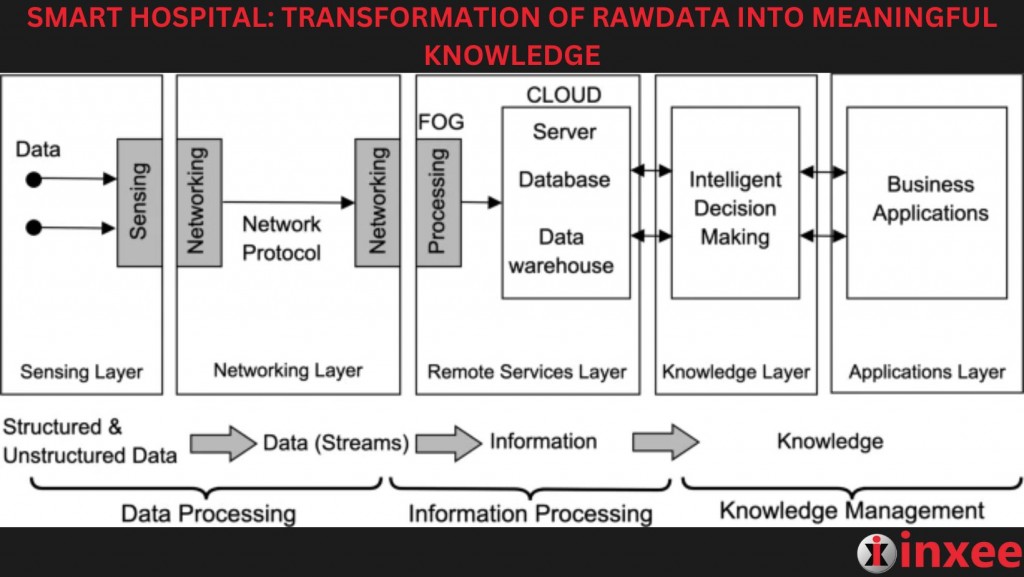Smart Hospital: Transformation of Raw Data Into Meaningful Knowledge: Five Layer Architecture

The analysis of the factors required to optimize IoT-based smart hospital design is analyzed based on five integrated IoT layers. The general approach in the literature is a 3-layer infrastructure approach. Three-layer structure is not sufficient for system design and modelling and does not adequately reflect the system components. Although three-layer architecture is an essential structure for IoT technology and it enables to device to be connected to the internet, this architecture is not suitable for all applications due to high energy consumption, the low ability for integration and communication. In addition to this, this architecture does not give a reliable solution and hides many details related to functionality and data flow. In contrast, five-layer architecture offers lower capacities in storage and energy. Considering these functionalities, the five-layer architecture is more suitable for IoT applications. Due to the limitations and technologies required, the layers were separated here into five layers.
1st Layer – Sensing Layer: This layer includes data collection technologies that demonstrate the necessary system and application infrastructure as well as the acquisition of information at the points where the information is produced. Depending on the type, effectiveness and exchange of information needed by the stakeholders for the potential stakeholders of smart hospitals is included in this layer. It is aimed to provide an information exchange with different authorization and authentication levels defined for each stakeholder group. The structural or non-structural information that is produced, updated or which emerged for the first time is collected, made accessible and updated by the system.
2nd Layer – Networking Layer: This layer managing the transmitting data to the remote servers as well as to interconnect systems and platforms.
3rd Layer – Remote Servers Layer: represents the remote computational technology of the IoT system.
4th Layer – Knowledge Layer: this layer includes intelligent decision making and analysis module of IoT systems where knowledge processing is done.
5th Layer – Applications Layer: this layer includes service platforms that are used by each systems’ stakeholders.
From this point on, each layer structure is identified by the system approach and the optimization vision. While explaining the layer structures, the basic approach is to inform the readers about existing technologies. These steps that need to be completed in each layer and about the limitations that will be faced while designing the layers. These limitations (constraints) define areas where a researcher can contribute to the planning and optimization of an IoT-based smart hospital design









Leave a Reply